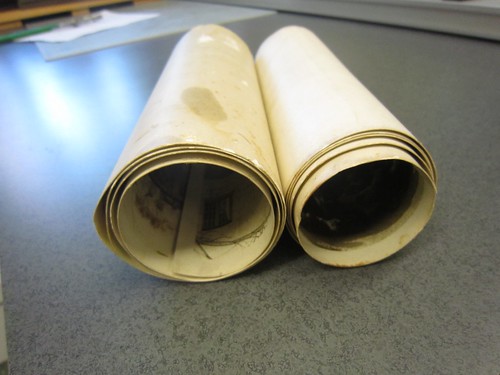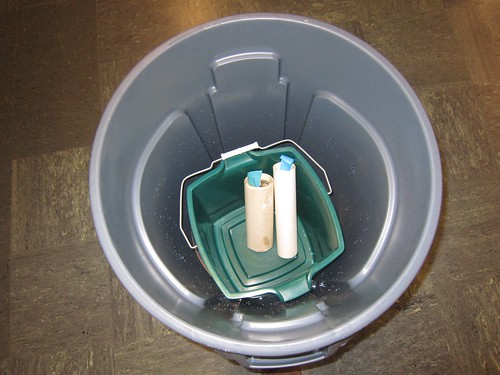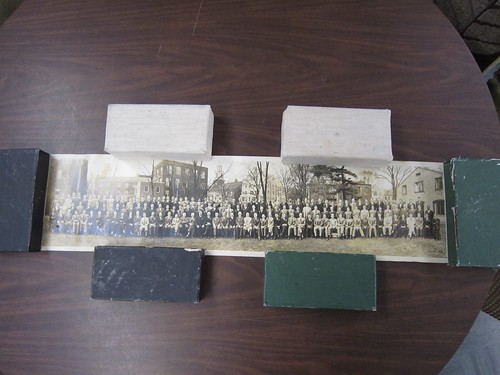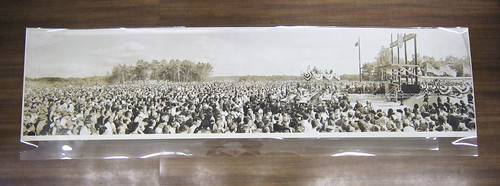This article is more than 5 years old.
From Stephanie Bennett, Collections Archivist, and Craig Fansler, Preservation Librarian
I imagine that lots of folks have a rolled up poster or photograph rolling around their houses. As collections archivist, I come across photos that have been tucked away, often for decades. Whereas with a poster, rolling it out is simply a matter of flattening, photographs are a little more complex – the glossy photo is often already cracking and can chip off, so providing access to the image is a little trickier.
When I come across these, I can’t do anything – often, they are unlabeled so I may not have any idea about their content, even if I know what collection they’re in. Thankfully, I am able to pass them off to our awesome preservation librarian, who works some magic to relax the photograph. Craig, what do you do to the images?
An excellent solution to this problem is a humidification chamber. The chamber is a super-simple device composed of a medium-sized plastic trash can with a small amount of water in the bottom. A plastic bucket containing the rolled photos is placed inside the trash can. When the lid is placed on the trash can, it becomes a humid micro-environment. After 24–36 hours, the photos absorb some of the humidity and relax.
To be clear, these photographs do not get wet, nor do they touch any of the water inside the chamber. They simply absorb enough of the humidity to relax a little. The photos can then be unrolled and flattened using weights. When the photos are completely dry and flattened, they are placed inside a mylar (polyester) sleeve. This allows the photo to be stored safely and handled without damage.
Two of these panoramic photos are from the Olin T. Binkley Papers. Dr. Binkley was a preacher andprominent Baptist who served as president of the Southeastern Baptist Theological Seminary. The images are class photos from his time studying at Yale University, where he received a doctorate. The third photograph, below, is a panoramic photo of Reynolda Campus’ groundbreaking ceremony in 1951.
Thanks to Craig for his work with the humidification chamber, which allows me to now describe, store, and provide access to these historical photographs!





2 Comments on ‘Preserving SC&A Panoramic Photos’
Thanks Stephanie and Craig, for your hard work in preserving Wake Forest’s collections!
I loved learning this about the panoramic photos. Now that I know this trick, it seems to me that being rolled is less of a problem than the folded one I have of my grandfather with his WWI army comrades, which has broken into pieces! This groundbreaking photo for the Reynolda Campus is quite different than what I’ve seen before.